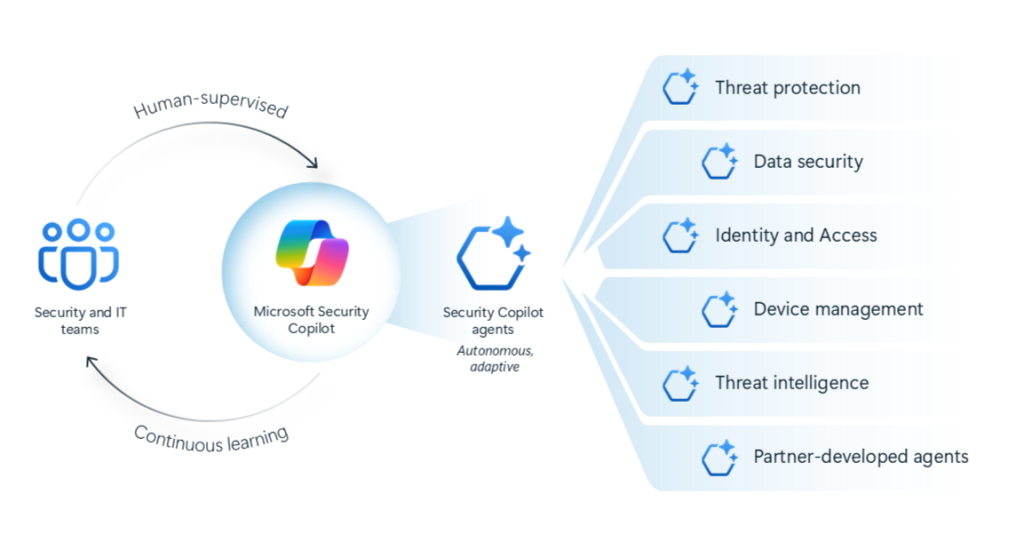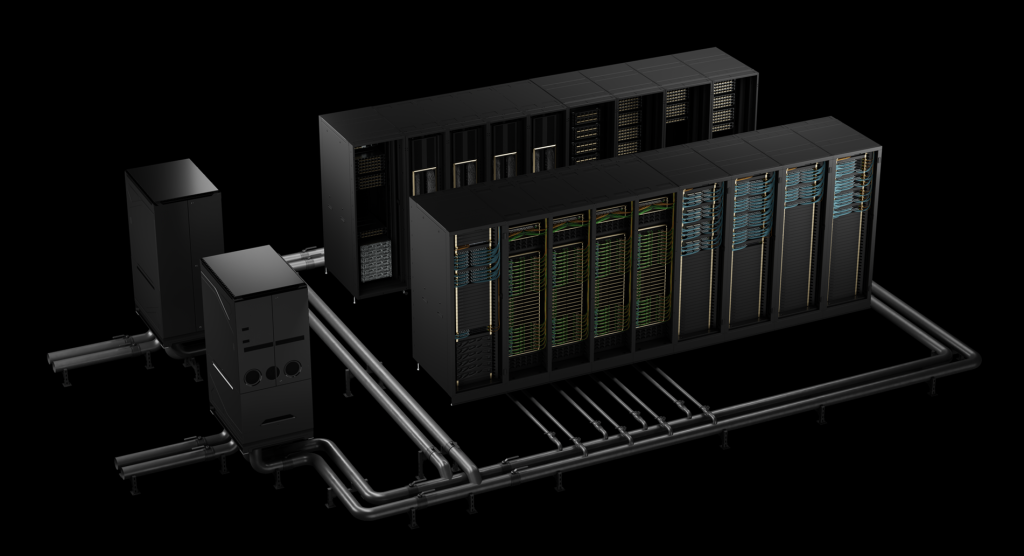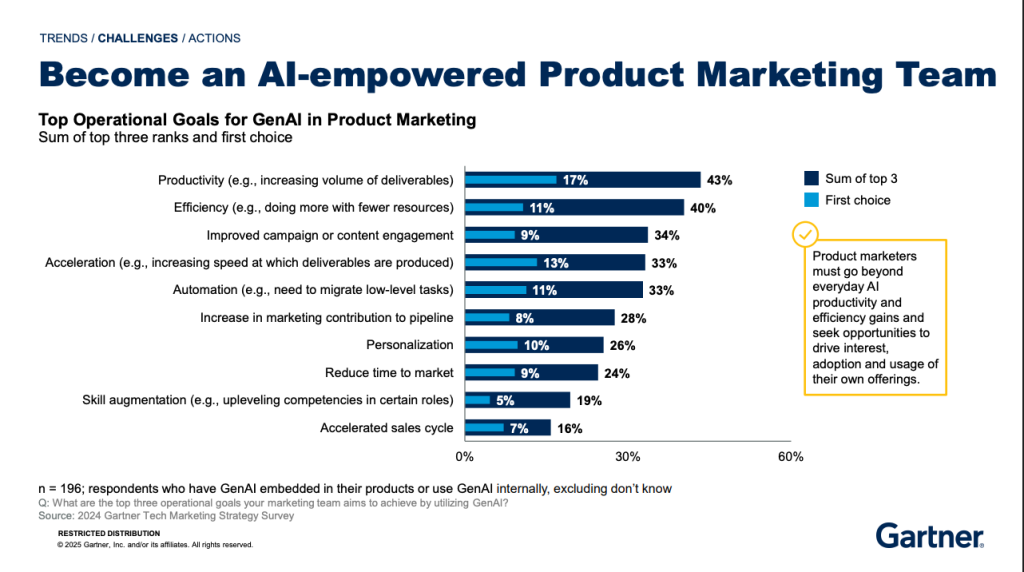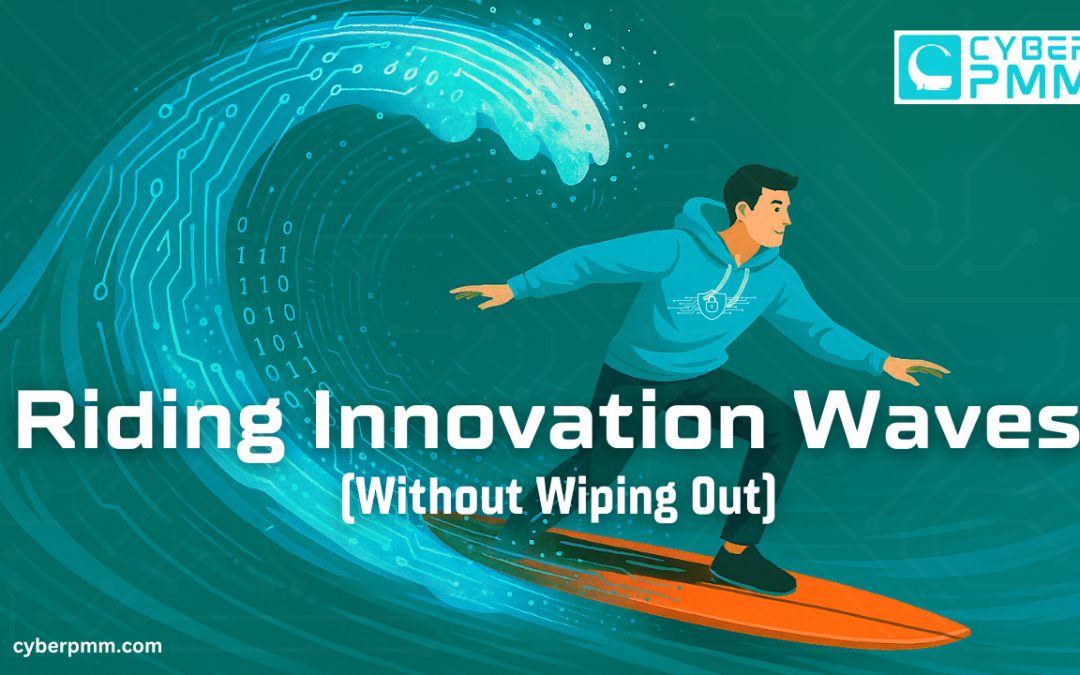Survive the chaos of innovation waves by spotting patterns, timing your moves, and leading smarter through market resets.
The Startup Bug Never Left
Back in college, I was all in on entrepreneurship. I even started our school’s first entrepreneurship club in its 100-year history and started a student-run business on campus which still operates today. I took a trip to Harvard to attend an entrepreneurship conference, and also visited Google’s HQ to see what Silicon Valley was really like. These were the days back when Google was still the scrappy underdog and Facebook had just launched, so the times were really exciting. The point is, I’ve always been fascinated by innovation.
I never built the next Google—but the itch to build, launch, and disrupt never left. That’s probably why I gravitated toward product marketing—especially product launches. It’s the part of the job that puts you closest to the edge of innovation as “intrapreneurs”.
Peter Drucker called innovation “creative destruction”—a fancy way of saying new ideas replace the old guard. In cybersecurity, startups are usually the ones doing the destroying. Bigger vendors? They tend to settle into comfortable patterns. As I detail in my recent book, Through the Cyber Maze, I’ve worked at seven different companies, from scrappy startups to giants. That range showed me both sides of the innovation coin.
PMMs Live in the Middle of the Mayhem
PMMs sit right in the blast zone between builders and buyers. We translate engineering into something a CISO will care about. That means we’re constantly being thrown into innovation cycles—sometimes before a product is even ready.
To do this job well, you need one superpower: adaptability. If you’re hiring for PMM roles and not screening for adaptability, you’re going to regret it. You can teach anyone your messaging framework, systems and processes. You can’t teach anyone how to stay sane during crazy deadlines, launches, pivots, layoffs, rapid responses and reorgs. That’s an aptitude they need to come equipped with.
Cloud Changed Innovation Velocity
Let’s talk about velocity. Ten years ago, Cloud changed everything. Instead of launching products once a year, vendors started shipping updates whenever engineering was ready to ship. PMMs went from big splashy launches once a year to scrambling just to keep content updated. Our jobs got more intense.
At first, it was chaos. Now it’s just… expected. The shift from annual planning to constant iteration broke a lot of old habits. Some teams adapted. Some didn’t.
This is the seasonal rhythm of innovation: first the summer of hype, then the winter of backlash, then the hybrid spring/fall model that actually works. Take Cloud as an example. It was all-in at first—then buyers said, “Wait, we want to keep some stuff on-prem.” Enter hybrid Cloud.
AI is Today’s Innovation Cycle
AI is the new Cloud but much bigger. It’s forcing a full reset on all levels of society. “But Dane, the trades won’t be impacted”. Really? I recently heard a story about an HVAC technician that used to struggle to keep up with inbound calls, and had to do “admin” after work, which made life rough. Now? He does his job, and while he’s working on site and his phone rings, an automated system answers calls and books appointments for him using AI. That’s one of a million use cases where AI is helping professionals, not just tech workers, save time.

Where will AI lead to for the cyber industry? I suspect we’ll land into a hybrid space where a mix of new AI innovation blends with existing SaaS that uses agents, similar to how we arrived at hybrid cloud. Then we’ll be talking about Quantum or whatever the next wave brings. It won’t end–innovation will only get more truncated in cyclical impact.
And we are already seeing the AI innovation cycle begin in full force in cyber. Microsoft just announced their AI Agent capabilities, which was already in motion by cyber startups like Seven AI and many others, but if Microsoft is putting their weight behind it, you better believe it will become mainstream soon. Let the acquisition frenzy begin. The innovation cycle is underway, are you ready?

When You’re Forced to Compete with Yourself
Sometimes, innovation forces you to out-market your own products. You have something new, but your old thing still brings in most of the revenue. What do you do?
- First: don’t pit old and new against each other in a comparison chart. That’s lazy marketing. The new thing is probably unproven. You’ll turn your customers into beta testers and risk losing them.
- Second: help the Field have the right conversation. A smart Sales rep starts by understanding what the customer is trying to achieve. If they’re going all-in on <insert new innovation here>, great—enable them to sell that. If they’re sticking with <existing product>, be ready to support that too. Be flexible.
Putting Customer First, As Our North Star
PMMs sometimes get caught between doing what’s right for the customer and doing what’s best for internal politics. Spoiler alert: you’re going to lose that battle if you opt for politics. Always advocate for the customer. That’s your north star. I don’t care if 25 execs are on a call agreeing on something, find out what the customer wants and stick to your guns.
Also: not every customer moves at the same pace, so if you do that, be sure to know exactly which customer profile you’re speaking on behalf of. For example, Government agencies took years to warm up to Cloud. So if you advocated too fiercely on behalf of slowing down Cloud adoption, you would have picked the wrong ICP to side with. Try to average out your various ICP’s into a unified voice.
By the way, sometimes laggards in innovation adoption lead to future market opportunities, but they just take longer. That hesitation led Amazon to launch GovCloud. Today, Nvidia is doing something similar with AI Factories—helping AI-hesitant companies build secure in-house AI systems so they don’t have to send all their data to a third party. They are not leaving any stone unturned, providing solutions to early adopters like hyperscalers and big Tech, and also working with innovation laggards by drawing more secure designs for future adoption.

Flexible Messaging is Key
Most cyber vendors aren’t hired as consultants to redesign IT architecture from scratch. That’s what the Deloittes and Accentures of the world are for. But our tech does need to plug into those bigger strategies and be included in reference architectures. So our messaging should leave the door open for both legacy and future-state solutions.
Don’t get locked into one position. Build a narrative that flexes depending on where the customer is in their journey. Hybrid messaging isn’t wishy-washy—it’s strategic. As an added benefit, it also leaves PMM with less heartburn by anticipating future changes before they happen.
Sound the Alarm
There are moments when a PMM needs to bring urgency to innovation. After attending AWS re:Invent years back during the era of “digital transformation”, I came back to my team waving all kinds of red flags. “We have to rethink our story now, not next quarter.”
PMMs are often the first ones to spot the wave before it crashes. And sometimes we’re the only ones willing to say it out loud. Similar to a guard on a watch tower, we are often observing market forces while they are still taking shape.
This is why some of our best friends are going to be industry analysts, who are seeing market changes much earlier than we are. Ignore them at your own peril! And of course, the most important factor to observe is CUSTOMERS, which is where market changes will be first indicated. As a fly fisherman, I look at them as the “indicator” in the system.
It’s also worth noting: companies aren’t lasting as long. In the 1960s, a Fortune 500 company could expect to last 60 years. Today? Maybe 15 to 20. In 10 years, maybe the current Fortune 500 looks totally different. The world is moving faster. You either surf the wave or get wiped out.
Culture Is the Real Differentiator
Here’s the truth: tech gets copied. Fast. What can’t be copied is a company’s culture, especially its ability to innovate.
Look at what’s happening with Generative AI. Every vendor is racing to build an AI Assistant or Agent. It’s a mad dash. But innovation isn’t just about features, it’s about mindset. Companies that built a culture of experimentation have already raced ahead and will win, even if they lose a few battles along the way.
\And the spending proves it. I won’t even cite the research because by the time you read this it will change, but the large tech companies are all-in. Amazon is spending over $100B on their AI systems this year (2025) alone. That’s how high the stakes are. Just look at the $500B amount pledged for the Stargate project by the current US administration. The national security investments are also increasing, but I won’t digress.

The point is, if Cloud reshaped technology 10 years ago, AI is about to do it again—but faster this time. This is an innovation cycle that PMMs need to learn how to manage to stay sane.
Future PMMs Might Not Be Human
Let’s apply this innovation cycle concept to our own function for a second. In the near future, AI Agents will also take over most PMM tasks. A PMM Agent could be auto-updating web pages when a feature ships, updating messaging briefs, sending community updates and updating Slack channels with less humans in the loop.
Will all PMMs disappear? No. But I anticipate less of us and more of an agentic coordination between functions. A PMM agent may instruct a Content Marketing agent for example, allowing for a single “full stack marketer” that is AI-powered. As the saying goes, “I’m not worried about AI taking my job. I’m worried about someone who uses AI taking my job.”
If you think this is wacky, even Gartner wrote about this in their recent Product Marketing 2025 vision webinar, noting how AI is reshaping the PMM function and increasing expectations on our role. Maybe not as drastically as I laid out above, but it is definitely going to happen.

As PMMs we need to prepare for innovation cycles (for AI, quantum and whatever comes after) by using our adaptability superpower, and by offering customers flexibility in our messaging and content to steer them to the right solution. Because let’s face it, most buyers will be using AI to do their product research in the near future, if not already. So buying decisions are going to be less about buyers reading your white paper or data sheet, and more about consolidating the information you make public into comparison tables that buyers ask AI to generate.
Final Thought
PMMs don’t just manage product launches—we manage innovation cycles. This includes the surrounding expectations, market changes, internal politics, and the sanity of our engineering and sales peers. We do it while fearlessly standing in the middle of an innovation storm and meeting the market head on.
You can’t control the pace of change. But you can get better at riding the wave.
Innovation will always bring chaos. It’s our job to make sense of it.
The mission of Cyber PMM 🐳 is to provide open source content, tools and frameworks that help Cyber PMMs fight digital chaos, cut through the hype, and do more with less.
Cyber PMMs are primarily product marketers in cybersecurity, but this space also supports tech founders, solutions marketers, product managers, engineers, and content creators—anyone bringing tech to market in chaotic environments.


